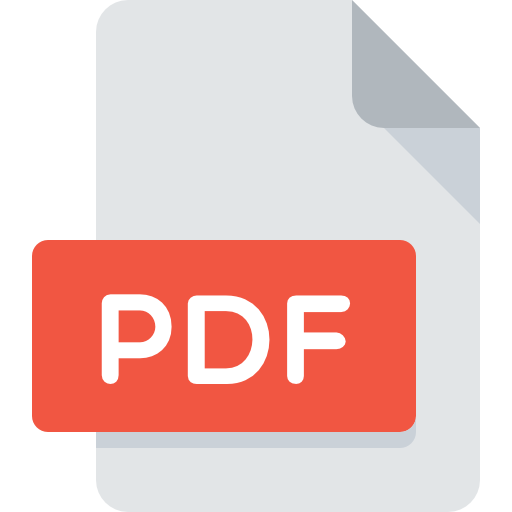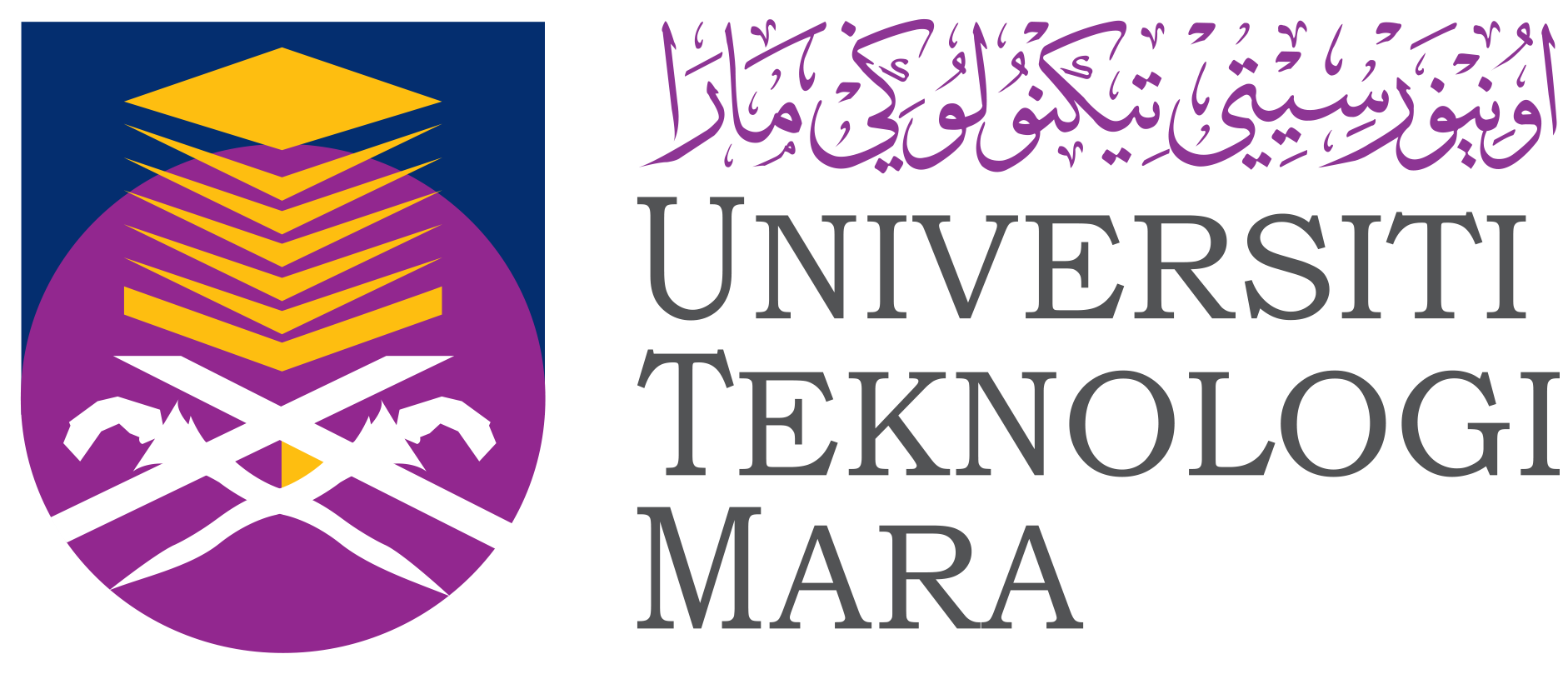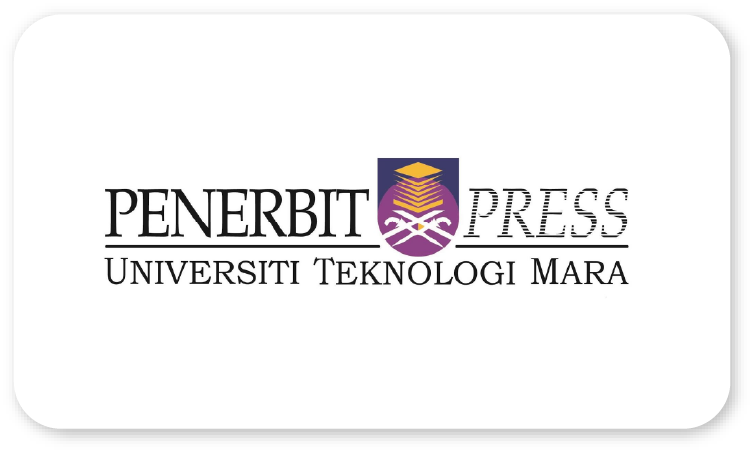
ChatGPT’s creative augmentation and its efficiency in the creative process towards agency practitioners’ satisfaction
Nur Balqis Muhamad Rizal
Faculty of Mass Communication and Media Studies, Universiti Teknologi MARA, 40450 Shah Alam, Selangor, Malaysia
Ahlam Abdul Aziz
Faculty of Mass Communication and Media Studies, Universiti Teknologi MARA, 40450 Shah Alam, Selangor, Malaysia
Abstract
This research presents the main issues of ChatGPT creative augmentation and its impact towards creative process efficiency and agency practitioners’ satisfaction. ChatGPT has become widely recognised as a leading AI chatbot, attracting the interest of agency practitioners with its capabilities in ideation, language translation, and generating photos and writing. Initially, this research aims to determine how effectively ChatGPT enhances creativity and efficiency in advertising agencies' creative processes and how this affects the satisfaction of agency practitioners. Therefore, this study aims to identify the impact of ChatGPT’s creative augmentation and its efficiency in the creative process among agency practitioners’ satisfaction. This quantitative research employs non-probability sampling, specifically utilising purposive sampling techniques to select the respondents that are currently working with advertising agencies. The respondents consisted of copywriter, graphic designer, art director and creative director. Besides that, the instruments were constructed using Google Forms, consisting of five (5) sections. The forms were disseminated to respondents through online communication platforms such as WhatsApp, Instagram and E-mail. Moreover, this research utilises descriptive and inferential data analysis to examine the correlations between the variables. Furthermore, the findings indicate that while agency practitioners acknowledge the benefits of employing ChatGPT for creative tasks, it is crucial to recognise that it is not yet regarded as a full replacement for human creativity. Respondents further illustrate that ChatGPT serves as an effective digital instrument capable of aiding practitioners in reducing their workload. Furthermore, this study holds a practical implication towards agency practitioners to foster better understanding about human-AI collaboration in creative endeavours. However, the limited availability of respondents and the brief data collection period have constrained the researcher's ability to compile an inclusive dataset.
Keywords:ChatGPT, Creative augmentation, Creative process efficiency, Agency practitioners’ satisfaction
References:
Abraham, K. G., Haltiwanger, J. C., Hou, C., Sandusky, K., & Spletzer, J. R. (2021). Reconciling survey and administrative measures of self-employment. Journal of Labor Economics, 39(4), 825-860. https://doi.org/10.1086/712187
Alahira, J., Ninduwezuor-Ehiobu, N., Olu-lawal, K. A., Ani, E. C., & Ejibe, I. (2024). Eco Innovative Graphic Design Practices: Leveraging Fine Arts To Enhance Sustainability in Industrial Design. Engineering Science & Technology Journal, 5(3), 783-793. https://doi.org/10.51594/estj/v5i3.902
Agustiningsih, G. (2021). Application of copywriting elements in social media advertising drinking products now in creating consumer interest. Jurnal Komunikasi dan Bisnis, 9(1), 55-67. http://jurnal.kwikkiangie.ac.id/index.php/JKB/article/view/678
Anantrasirichai, N., & Bull, D. (2022). Artificial intelligence in the creative industries: a review. Artificial intelligence review, 55(1), 589-656. https://doi.org/10.1007/S10462-021-10039-7
Antre, G. (2023). Application of AI Technology in Modern Digital Marketing. IBMRD's Journal of Management & Research, 12(1), 60-66. https://doi.org/10.17697/ibmrd/2023/v12i1/172871
Atlas, S. (2023). ChatGPT for higher education and professional development: A guide to conversational AI. https://digitalcommons.uri.edu/cba_facpubs/548
Auernhammer, J., & Roth, B. (2021). The origin and evolution of Stanford University’s design thinking: From product design to design thinking in innovation management. Journal of Product Innovation Management, 38(6), 623-644. https://doi.org/10.1111/jpim.12594
Basheer, S. (2024). How to Use ChatGPT? [Top 10 Tips]. Analystics Vidhya. https://www.analyticsvidhya.com/blog/2023/05/how-to-harness-the-full-potential-of-chatgpt-tips-prompts/
Choudhury, A., & Shamszare, H. (2023). Investigating the impact of user trust on the adoption and use of ChatGPT: Survey analysis. Journal of Medical Internet Research, 25, e47184. https://www.jmir.org/2023/1/e47184/
Cropley, D. H. (2021). Creative products: Defining and measuring novel solutions In Creativity andinnovation (pp. 61-74). Routledge. https://doi.org/10.4324/9781003233930-6/CREATIVE-PRODUCTS-DAVIDCROPLEY
Dehman, H. (2023). Graphic design, Already Intelligent? Current possibilities of generative AI applications in graphic design. https://www.diva-portal.org/smash/record.jsf?pid=diva2:1797022
Firat, M. (2023). What ChatGPT means for universities: Perceptions of scholars and students. Journal of Applied Learning and Teaching, 6(1), 57-63. https://doi.org/10.37074/jalt.2023.6.1.22
Fui-Hoon Nah, F., Zheng, R., Cai, J., Siau, K., & Chen, L. (2023). Generative AI and ChatGPT: Applications, challenges, and AI-human collaboration. Journal of Information Technology Case and Application Research, 25(3), 277-304. https://doi.org/10.1080/15228053.2023.2233814
Henriksen, D., Creely, E., Henderson, M., & Mishra, P. (2021). Creativity and technology in teaching and learning: a literature review of the uneasy space of implementation. Educational Technology Research and Development, 1-18. https://doi.org/10.1007/s11423-020-09912-z
Huh, J., Nelson, M. R., & Russell, C. A. (2023). ChatGPT, AI advertising, and advertising research and education. Journal of Advertising, 52(4), 477-482. https://doi.org/10.1080/00913367.2023.2227013
Islam, I., & Islam, M. N. (2024). Exploring the opportunities and challenges of ChatGPT in academia. Discover Education, 3(1), 31. https://10.1007/S44217-024-00114-W
Ivcevic, Z., & Grandinetti, M. (2024). Artificial intelligence as a tool for creativity. Journal of Creativity, 34(2), 100079. https://doi.org/10.1016/j.yjoc.2024.100079
Jiamsirikarn, J., & Prayong, P. (2022). Creative working process in advertising agency: The Case Study of GGWP (Bangkok) (No. 308233). Thammasat University. Journalism and Mass Communication. https://digital.library.tu.ac.th/tu_dc/digital/api/DownloadDigitalFile/dowload/193598
Kartsivadze, T. (2022). Copywriting In Social Media. International Journal of Innovative Technologies in Economy, (4 (40)). https://doi.org/10.31435/rsglobal_ijite/30122022/7924
Katole, M. R. S. (2024). LinkedIn Data Analysis and Predications of Recruitment Ratio using Power BI. International Journal for Research in Applied Science and Engineering Technology, 12(10). https://doi.org/10.22214/ijraset.2024.64632
Khurana, M., & Kobiela, P. (2023). Professionals meet ChatGPT: A qualitative study on the perception of professional service workers’ usage of ChatGPT to support their work tasks. https://www.diva-portal.org/smash/record.jsf?pid=diva2:1779130
Klimenko, A. Y. (2024). Technological Change and Its Effect on Education. J Edu Psyc Res, 6(1), 01-18. https://www.opastpublishers.com/open-access-articles/technological-change-and-its-effect-oneeducation.pdf
Kim, Y., Lee, J., Kim, S., Park, J., & Kim, J. (2024, March). Understanding users’ dissatisfaction with ChatGPT responses: Types, resolving tactics, and the effect of knowledge level. In Proceedings of the 29th International Conference on Intelligent User Interfaces (pp. 385-404). https://doi.org/10.1145/3640543.3645148
Lee, A. T., Ariffin, H. F., Akhir, I. M., & Devi, M. (2023). Key Drivers of Consumer Acceptance of Technology Use in Food Production: Synergy between Health Benefits and Psychological Factors. ESTEEM Journal of Social Sciences and Humanities, 7. https://ejssh.uitm.edu.my
Lin, P. Y., Liang, T. P., Huang, H. C., & Li, Y. W. (2021). Design quality, relationship intimacy andcontinuance intention of mobile apps: An extension to the is success model. Journal of Electronic Commerce Research, 22(4), 266-284. http://www.jecr.org/sites/default/files/2021vol22no4_Paper1.pdf
Liu, Q., Zhou, Y., Huang, J., & Li, G. (2024). When ChatGPT is gone: Creativity reverts and homogeneity persists. arXiv preprint arXiv:2401.06816. https://doi.org/10.48550/arXiv.2401.06816
Lund, B. D., & Wang, T. (2023). Chatting about ChatGPT: how may AI and GPT impact academia and libraries? Library hi tech news, 40(3), 26-29. http://dx.doi.org/10.2139/ssrn.4333415
Nazir, A., & Wang, Z. (2023). A comprehensive survey of ChatGPT: Advancements, applications, prospects, and challenges. Meta-radiology, 100022. https://doi.org/10.1016/j.metrad.2023.100022
Osadchaya, E., Marder, B., Yule, J. A., Yau, A., Lavertu, L., Stylos, N., ... & AlRabiah, S. (2024). To ChatGPT, or not to ChatGPT: Navigating the paradoxes of generative AI in the advertising industry. Business Horizons. https://doi.org/10.1016/j.bushor.2024.05.002
Palomo-Domínguez, I. (2021). Design Thinking: An Innovative Educational Method in Advertising. VADYBA, 37(2), 63-70. http://doi.org/10.38104/vadyba.2021.2.07
Poon, W. C., Mohamad, O., & Yusoff, W. F. W. (2020). Examining the antecedents of ambidextrous behaviours in promoting creativity among
SMEs in Malaysia. Global Business Review, 21(3), 645-662. https://doi.org/10.1177/0972150918779267
Rosengren, S., Eisend, M., Koslow, S., & Dahlen, M. (2020). A meta-analysis of when and how advertising creativity works. Journal of Marketing, 84(6), 39-56. https://doi.org/10.1177/0022242920929288
Roumeliotis, K. I., & Tselikas, N. D. (2023). Chatgpt and open-ai models: A preliminary review. Future Internet, 15(6), 192. https://doi.org/10.3390/fi15060192
Schmidt, A., Elagroudy, P., Draxler, F., Kreuter, F., & Welsch, R. (2024). Simulating the Human in HCD with ChatGPT: Redesigning Interaction Design with AI. Interactions, 31(1), 24-31. https://www.springer.com/
Schmidt, L., Piazza, A., & Wiedenhöft, C. (2023). “Augmented Brainstorming with AI”– Research Approach for Identifying Design Criteria for Improved Collaborative Idea Generation Between Humans and AI. In HHAI 2023: Augmenting Human Intellect (pp. 410-412). IOS Press. https://doi.org/10.3233/FAIA230113
Seliana, N., Suroso, A. I., & Yuliati, L. N. (2020). Evaluation of e-learning implementation in the university using DeLone and McLean success model. Jurnal Aplikasi Manajemen, 18(2), 345-352. https://doi.org/10.21776/ub.jam.2020.018.02.15
Shukla, S. (2023). Creative Computing and Harnessing the Power of Generative Artificial Intelligence. Journal Environmental Sciences And Technology, 2(1), 556-579. https://doi.org/10.5281/zenodo.10847103
Skjuve, M., Følstad, A., & Brandtzaeg, P. B. (2023, July). The user experience of ChatGPT: findings from a questionnaire study of early users. In Proceedings of the 5th international conference on conversational user interfaces (pp. 1-10). https://doi.org/10.1145/3571884.3597144
Sobottka, L., & Klopp, L. (2024). Satisfactory Performance of Text-Generative AI Compared to Human-Written Content for Websites in Digital Marketing. https://www.diva-portal.org/smash/record.jsf?pid=diva2:1867930
Soegoto, E. S., Mulyanto, M., Yuliawati, S., & Putri, A. V. (2022). Digitalization Through Creative Writing on social media. International Journal of Research and Applied Technology (INJURATECH), 2(1), 142-150. http://ojs.unikom.ac.id/index.php/injuratech/article/view/6783
Sood, D. (2024). Who Owns ChatGPT: Insights and Usage Tips. https://www.deepbrain.io/tech-and-ai-explained/who-owns-chat-gpt#
Spies, R., Grobbelaar, S., & Botha, A. (2020). A scoping review of the application of the task-technology fit theory. In Conference on e-Business, e-Services and e-Society (pp. 397-408). Cham: Springer International Publishing. https://doi.org/10.1007/978-3-030-44999-5_33
Statista. (2024, November 5). Awareness of artificial intelligence in Malaysia Q1 2020–Q4 2023. Statista. https://www.statista.com/statistics/1327364/malaysia-awareness-of-artificial-intelligence/
Stevenson, C., Smal, I., Baas, M., Grasman, R., & van der Maas, H. (2022). Putting GPT-3's creativity to the (alternative uses) test. arXiv preprint arXiv:2206.08932.
Tahoun, N., & Taher, A. (2023). Artificial intelligence as the new realm for online advertising. In Marketing and Advertising in the Online-to-Offline (O2O) World (pp. 66-83). IGI Global. https://doi.org/10.31124/advance.15139863
Wang, Y. (2023). Artificial Creativity-Ethical Reflections on AI's Role in Artistic Endeavors. Authorea Preprints. https://doi.org/10.36227/techrxiv.23897169.v1
Wu, T., He, S., Liu, J., Sun, S., Liu, K., Han, Q. L., & Tang, Y. (2023). A brief overview of ChatGPT: The history, status quo and potential future development. IEEE/CAA Journal of Automatica Sinica, 10(5), 1122-1136. https://10.1109/JAS.2023.123618
Yao, B. (2023). Assessing the Viability and Effectiveness of Chatgpt Applications in the Customer Service Industry: A Study on Business Models and User Experience. Highlights in Business, Economics and Management, 21, 843-851. https://drpress.org/ojs/index.php/HBEM/article/view/14785
Zaineldeen, S., Hongbo, L., & Koffi, A. L. (2020). Review of The DeLone and McLean Model of Information Systems Success' Background and it's An application in The Education Setting, and Association Linking with Technology Acceptance Model. Int. J. Res. Soc. Sci, 10(09), 99-109. https://www.researchgate.net/publication/343994433
Zhong, Q., Ding, L., Liu, J., Du, B., & Tao, D. (2023). Can chatgpt understand too? a comparative study on chatgpt and fine-tuned bert. http://arxiv.org/abs/2302.10198
Zhu, F., & Zou, W. (2023). The Role of Generative AI in Human Creative Processes: Experimental Evidence. Available at SSRN 4676053. https://doi.org/10.2139/ssrn.4676053
Zhu, J. J., Jiang, J., Yang, M., & Ren, Z. J. (2023). ChatGPT and environmental research. Environmental Science & Technology, 57(46), 17667-17670. https://doi.org/10.1021/acs.est.3c01818



